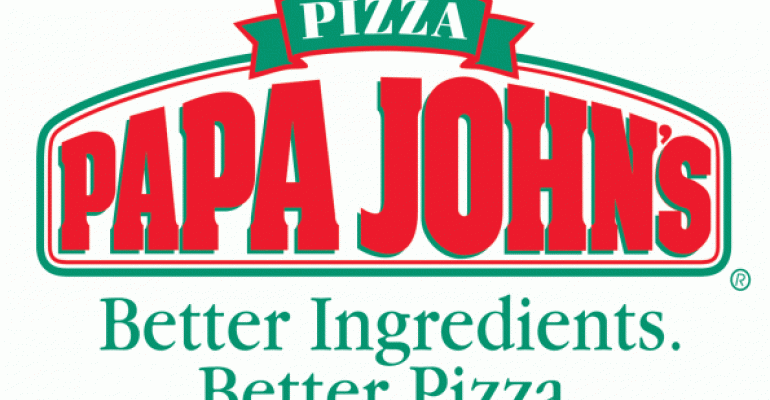Papa John’s International Inc. might be a pizza chain, but the brand’s chief marketing officer wants to operate like an ecommerce company.
“More than half of our transactions come through digital channels,” said CMO Brandon Rhoten on Papa John’s second quarter earnings call Wednesday. More specifically, the number is 60 percent.
“We have to step up and act like an ecommerce company and advertise like an ecommerce company.”
Papa John’s in recent years has bolstered its executive ranks — with the addition of Rhoten and Mike Nettles, the chief information and digital officer — in its bid to keep pace with rivals in the digital race and grow sales as consumers demand more convenience.
The two are working together closely, such as with last month’s announcement of Facebook ordering.
Their job is seemingly easy on the surface. After all, the company already enjoys a strong digital presence, and the 1.4 percent U.S. same-store sales growth in the quarter ended June 25, which Papa John’s reported on Tuesday, was the company’s 27th straight positive domestic quarter.
Yet those second quarter results represent a slowdown from recent performance, and is far behind rival Domino’s Pizza Inc., which reported 9.5 percent same-store sales in its second quarter and has been near or above double-digit comps the past two years.
Executives on Wednesday said they have a lot of faith in the new management team, and the company put some money behind the words. Papa John’s said this week that it would borrow more money to buy as much of $500 million of its own shares.
Wall Street cheered the news, blowing off the sales number and sending the company’s stock surging nearly 12 percent. Investors frequently like share buybacks because it’s traditionally a sign of faith in the company, and it spreads profits among fewer owners.
“We’ve have a heck of a run the last seven to eight years for the brand,” company president Steve Ritchie said. “Even though sales have slowed, we’re really at a transformative time and believe in the long-term future of the brand.”
The increase on Wednesday helped the stock recover much of its losses for the year. Going into Wednesday’s trading, Papa John’s stock had been down more than 16 percent on the year amid concerns of that sales softness.

“Seven years ago I didn’t have confidence in the brand that I do now with the leadership team and the momentum we have,” CEO John Schnatter said on the earnings call. “It’s solid. I believe in what we’re doing.”
Lance Tucker, Papa John’s CFO, said that the lending environment is strong now, making this the right time for the chain to borrow money. And the company’s cash flows are “stable and consistent.”
“That should allow us to service the debt comfortably without pressuring the day-to-day decision-making of the company, which is important to us,” Tucker said.
Revenues at the Louisville-based pizza chain increased 2.8 percent in the quarter, to $434.8 million from $423 million. Net income, meanwhile, increased 4.4 percent to $23.5 million, or 65 cents per share, from $22.5 million, or 61 cents.
Schnatter said that the company “continued to perform well in a very challenging, competitive environment.”
Executives said that they have confidence in sales plans going forward, notably the upcoming NFL season — Papa John’s advertises heavily around sporting events, and so NFL ratings matter a great deal to the company’s performance.
Rhoten, for his part, believes the company has some notable strengths that its competitors do not have. “It’s very clear this is the only brand in the category that can own better,” he said. “We can have an equity position in more than just value.”
One area where Papa John’s is struggling is India. The company’s same-store sales grew 3.9 percent in international markets, where Papa John’s has 1,660 of its 5,088 locations.
The chain has struggled in India for years, but its franchisee closed the market, closing 33 locations in July alone.
“This is an isolated issue,” Ritchie said. “We had 20 stores in the market. The market struggled for years with multiple franchisees involved. We were clearly outscales versus our larger competitor. Domino’s has done quite well in the India market.
“There’s a very different perception on quality in that marketplace. It’s not a market where we would see going back to anytime soon.”
Contact Jonathan Maze at [email protected]
Follow him on Twitter at @jonathanmaze





